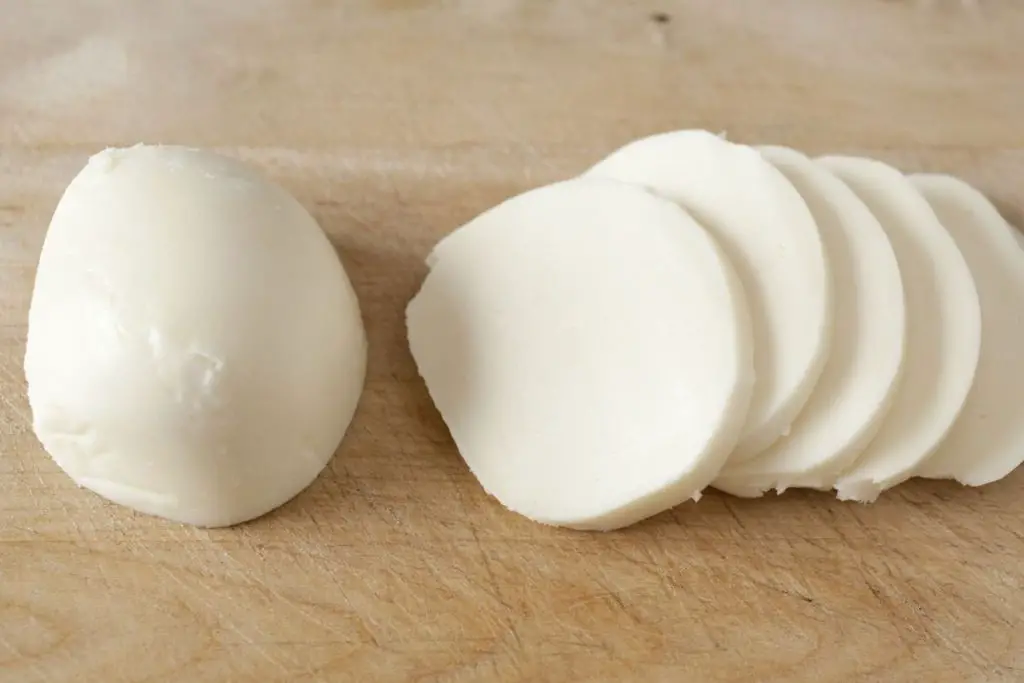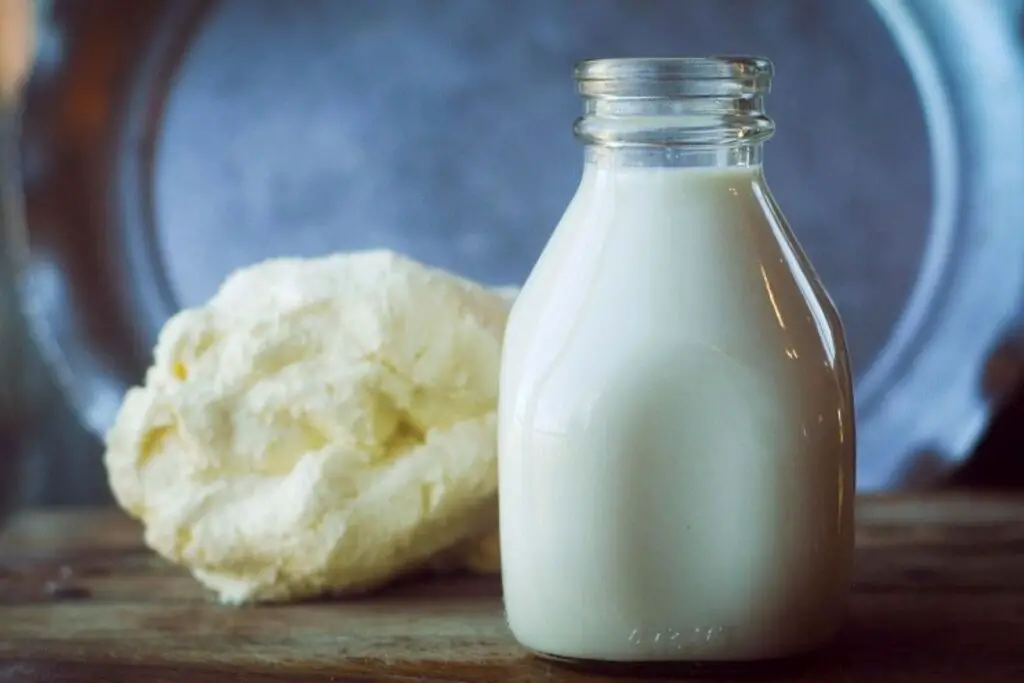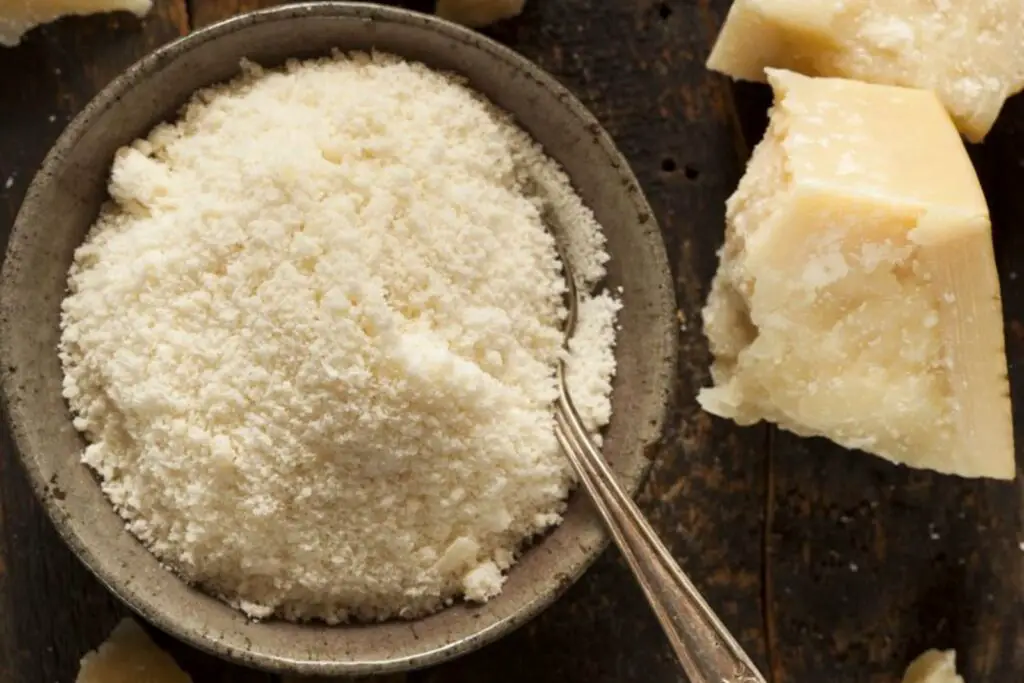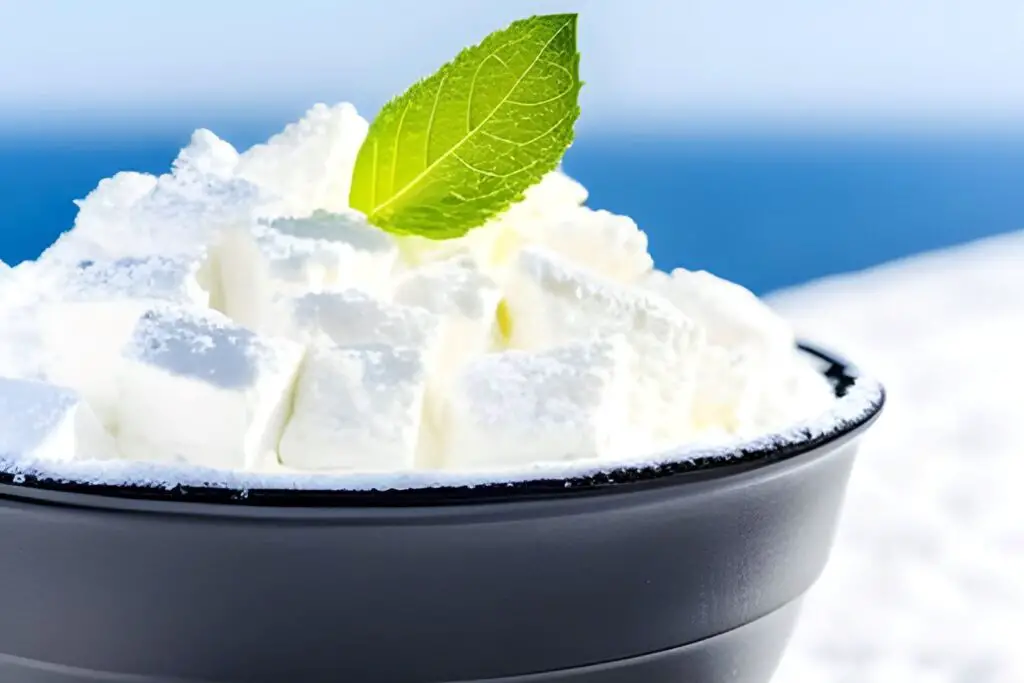
Curd, also known as yogurt or yogurt, is a creamy and delicious dairy product made from fermented milk. It is enjoyed as a standalone snack, used as an ingredient in various recipes, or served as a side dish with meals. Curd is not only tasty but also packed with essential nutrients like protein, calcium, and probiotics that promote gut health. Freezing curd can be a convenient way to preserve it for future use, especially if you have a surplus or want to extend its shelf life. By following a few simple steps, you can successfully freeze curd while maintaining its texture and flavor. This article provides a comprehensive guide on how to freeze curd effectively, ensuring that it stays fresh and enjoyable whenever you decide to use it.
Here’s a step-by-step guide on freezing curd:
Step 1: Choose fresh curd
When freezing curd, it is essential to begin with high-quality curd that is fresh and in optimal condition. This ensures that the frozen curd retains its taste, texture, and nutritional value when thawed and used later. Here’s why selecting fresh curd is important:
Flavor preservation: Fresh curd has a clean and distinct flavor that is not compromised by any off flavors or signs of spoilage. Choosing curd that is within its expiration date and doesn’t exhibit any sour or unpleasant smells will help maintain its delicious taste after freezing and thawing.
- Texture maintenance: Fresh curd has a smooth and creamy texture that is desired by many. If the curd is not fresh or has been exposed to unfavorable conditions, it may develop lumps or a grainy texture, which can affect its overall quality. Opting for fresh curd ensures that the frozen curd retains its original creamy consistency.
- Absence of additives: When freezing curd, it is best to use plain curd without any added fruits, flavorings, or sweeteners. This is because additives can alter the curd’s composition and may not freeze or thaw uniformly. Plain curd freezes and thaws more consistently, resulting in a better final product.
To choose fresh curd, check the expiration date on the packaging and look for curd that is stored at the appropriate temperature in the store. Additionally, inspect the curd visually and smell it to ensure there are no signs of spoilage. Fresh curd should have a clean and slightly tangy aroma.
Step 2: Portion the curd
When freezing curd, it is beneficial to divide it into smaller portions if it comes in a large container. Portioning the curd allows for greater convenience and flexibility when using it later. Here’s why dividing the curd into smaller portions is recommended:
- Controlled thawing: Freezing the entire batch of curd means you’ll have to thaw and use it all at once. By dividing it into smaller portions, you can thaw only the amount you need for a specific recipe or serving, reducing waste and ensuring that the rest of the curd remains frozen for future use.
- Avoid repeated freezing and thawing: Each time you freeze and thaw curd, it undergoes changes in texture and consistency. By portioning the curd before freezing, you can avoid the need to repeatedly freeze and thaw the entire batch. This helps maintain the overall quality of the curd, as repeated thawing and refreezing can result in a loss of flavor and texture.
- Convenient measurement: Dividing the curd into smaller portions allows for easy measurement when using it in recipes. Whether you need a specific amount for a dressing, dip, or smoothie, having pre-portioned curd makes it simpler to achieve accurate measurements and maintain consistency in your culinary creations.
To portion the curd, you can use small freezer-safe containers or even ice cube trays, depending on the quantity needed for each portion. Make sure the containers or trays are clean and airtight to prevent freezer burn and maintain the curd’s quality.
Can I freeze curd in individual portions?
Yes, freezing curd in individual portions is a convenient and practical approach. It allows you to thaw and use only the amount you need at a given time, minimizing waste. Portioning the curd into individual servings also facilitates faster and more even thawing, as you can take out only the desired portions from the freezer without disturbing the rest.
Step 3: Transfer to freezer-safe containers
After portioning the curd, it’s important to transfer it into clean and airtight freezer-safe containers before freezing. The choice of containers and proper handling during this step ensures the curd remains fresh, avoids contamination, and prevents freezer burn. Here’s why transferring curd to freezer-safe containers is essential:
- Preserve flavor and prevent contamination: Freezer-safe containers help maintain the curd’s flavor and protect it from absorbing any unwanted odors or flavors from other foods in the freezer. Containers with airtight lids create a barrier against air and moisture, preventing the curd from developing off flavors or becoming spoiled during freezing.
- Minimize freezer burn: Freezer burn occurs when moisture from the curd evaporates, causing dehydration and oxidation. This results in unappealing texture and taste. Using freezer-safe containers with tight-fitting lids helps reduce the exposure of the curd to air, minimizing the risk of freezer burn and ensuring the curd retains its quality.
- Accommodate expansion: Liquids, including curd, expand when frozen. Leaving some headspace at the top of the containers allows room for expansion without causing the lids to pop off or the containers to crack. Failing to provide sufficient headspace may lead to leakage or damage to the containers, compromising the integrity of the curd.
Glass or plastic containers are commonly used for freezing curd. Both options work well, but ensure they are specifically labeled as freezer-safe to withstand the low temperatures. It’s important to clean the containers thoroughly before transferring the curd to prevent any potential contamination.
When filling the containers, leave approximately 1/2 inch (1.3 cm) of headspace at the top to accommodate expansion during freezing. This extra space helps maintain the integrity of the containers and prevents them from bursting.
Can I freeze curd in its original container?
It is generally not recommended to freeze curd in its original container, especially if it is a plastic or glass container. Freezing can cause the liquid in the curd to expand, leading to the risk of the container cracking or breaking. It is best to transfer the curd to a freezer-safe container or freezer bag before freezing, leaving some room for expansion to prevent any potential damage.
Step 4: Label the containers
Once you have transferred the curd into freezer-safe containers, it is crucial to label each container with the date of freezing. This simple step allows you to keep track of the curd’s storage time and ensures that you use the oldest batches first. Here’s why labeling the containers is important:
- Storage management: Labeling the containers with the date of freezing helps you effectively manage your frozen curd inventory. It provides you with a clear indication of how long each batch has been stored, allowing you to prioritize the usage of older curd and prevent it from being forgotten or left unused for an extended period.
- Quality control: Curd, like any other food item, has a limited shelf life even when frozen. By labeling the containers, you can easily identify the duration of storage and ensure that you consume the curd within its recommended timeframe for the best flavor, texture, and overall quality. This practice helps you avoid using curd that has been frozen for too long, which may have compromised taste or texture.
- Prevent waste and maintain freshness: When you have multiple containers of frozen curd, labeling them with the freezing date allows you to keep track of their freshness. By using the oldest batches first, you can avoid unnecessary waste and ensure that you enjoy the curd at its peak quality.
To label the containers, you can use adhesive labels, masking tape, or even write directly on the container’s surface with a waterproof marker. Include the date of freezing on each label in a clear and visible manner.
Step 5: Freeze the curd
After you have labeled the containers with the date of freezing, the next step is to place them in the freezer. However, it’s important to ensure that the containers are positioned securely and avoid stacking them until they are fully frozen. Here’s why proper freezing techniques are crucial:
- Stability and prevention of leakage: Placing the curd containers in a stable position in the freezer is essential to prevent any accidental spills or leaks. Unstable positioning can cause the containers to tip over, potentially leading to a messy situation and cross-contamination with other frozen items. It is recommended to arrange the containers in a way that they are not likely to be disturbed or fall over.
- Maintaining container integrity: Curd containers, whether made of glass or plastic, are designed to withstand freezing temperatures. However, stacking them before they are fully frozen can lead to uneven distribution of weight, potentially causing containers to deform or crack. Keeping the containers separate until they are solidly frozen ensures their structural integrity and avoids any damage during the freezing process.
- Even freezing: Allowing the curd containers to freeze without stacking promotes even airflow and temperature distribution around each container. This helps ensure that the curd freezes uniformly, resulting in consistent texture and quality throughout the batch.
To properly freeze the curd, find a stable spot in the freezer where the containers can be placed without the risk of falling or being jostled. Avoid stacking the containers initially and leave enough space between them to allow proper air circulation. Once the curd is fully frozen, you can stack the containers to optimize space in the freezer if needed.
How long can frozen curd stay gone in the freezer?
Frozen curd can generally be stored in the freezer for up to three months while maintaining its quality. Beyond that timeframe, the curd may start to develop freezer burn, which can affect its taste and texture. It is important to keep the curd tightly sealed in an airtight container or freezer bag to minimize exposure to air and moisture. Labeling the container with the date of freezing can help you keep track of its storage time.
Step 6: Thaw and use frozen curd
Once you are ready to use the frozen curd, it’s important to thaw it properly to maintain its texture and flavor. Here’s the recommended method for thawing frozen curd:
- Transfer to the refrigerator: Take the desired portion of frozen curd from the freezer and transfer it to the refrigerator. Placing it in the refrigerator allows for a slow and gradual thawing process, which helps preserve the curd’s smooth consistency.
- Thaw slowly overnight: Allow the curd to thaw slowly in the refrigerator overnight or for approximately 8-12 hours. This gradual thawing process prevents sudden temperature changes and helps the curd retain its texture and taste. Avoid thawing at room temperature or using methods like microwaving, as they can lead to uneven thawing or even partial cooking of the curd.
- Gently stir before using: Once the curd has thawed completely, gently stir it to restore its smooth consistency. This helps distribute any moisture that might have separated during freezing and ensures a uniform texture throughout.
It’s worth noting that curd may undergo slight changes in texture after freezing and thawing. It may become slightly thinner or develop a slightly grainy texture. However, gently stirring the curd can help improve its consistency.
Remember, once the curd is thawed, it should be consumed within a few days for the best quality. Avoid refreezing previously frozen curd, as it can further affect its texture and flavor.
Step 7: Shelf life and storage
Frozen curd can be stored in the freezer for a certain period of time while maintaining its quality. Understanding the shelf life and recommended storage duration helps ensure that you enjoy the best taste and texture when using the frozen curd. Here’s what you need to know:
- Recommended consumption: To enjoy the best taste and texture of the curd, it is recommended to consume it within the first month of freezing. While the curd may still be safe to eat beyond that point, it might start to lose some of its freshness and quality. Consuming the curd within the initial month ensures a more enjoyable experience.
- Proper storage: To maintain the quality of the frozen curd, proper storage practices are essential. Make sure the curd is stored in clean and airtight freezer-safe containers. Label the containers with the freezing date for easy tracking. Keep the freezer temperature at or below 0°F (-18°C) to maintain the curd’s integrity.
- Quality considerations: It’s important to note that frozen curd may undergo slight changes in texture and consistency compared to fresh curd. It may become slightly thinner or develop a grainy texture after thawing. While these changes are normal, they can affect the curd’s overall appeal. Gently stirring the curd after thawing can help improve its consistency.
Other related questions
Can I refreeze previously thawed curd?
It is generally not recommended to refreeze previously thawed curd. When curd is thawed, its texture and structure can be altered, and refreezing can further deteriorate its quality. Additionally, each freeze-thaw cycle increases the risk of bacterial growth and foodborne illnesses. To avoid waste, it’s best to portion the curd appropriately before freezing so that you only thaw the amount you need for a single use.
How do I know if my frozen curd has gone bad?
When assessing whether frozen curd has gone bad, there are a few indicators to look out for. First, check for any signs of freezer burn, such as discoloration, dryness, or ice crystals forming on the curd’s surface. Additionally, if the curd develops an off-putting odor or tastes noticeably sour or rancid upon thawing, it is likely spoiled. Trust your senses and if there are any doubts about the quality or safety, it’s best to discard the curd to avoid potential health risks.
Can I use frozen curd with the fresh ones?
Yes, you can use frozen curd with fresh ones, but there may be some differences in texture and consistency. Frozen curd tends to lose some of its moisture during freezing, resulting in a slightly different texture compared to fresh curd. However, it can still be used in recipes where the texture is not a critical factor, such as baking or cooking. Keep in mind that frozen curd may release more moisture when thawed, so you may need to adjust the recipe accordingly.
Will freezing curd affect its texture or taste?
Yes, freezing curd can affect its texture and taste to some extent. The freezing process can cause the curd to lose some of its moisture, leading to a slightly drier or grainier texture when thawed. Additionally, the flavor of the curd may be slightly altered, as freezing can dull or mute some of the taste nuances. However, the overall impact on texture and taste is generally minimal, and frozen curd can still be enjoyable and used in various recipes.
Can I freeze curd with added flavorings or mix-ins?
Yes, you can freeze curd with added flavorings or mix-ins. However, it’s important to consider the nature of the added ingredients. Some flavorings or mix-ins may not freeze well and could result in texture changes or loss of quality. It is recommended to experiment and assess the suitability of specific flavorings or mix-ins for freezing curd before committing to large batches.








